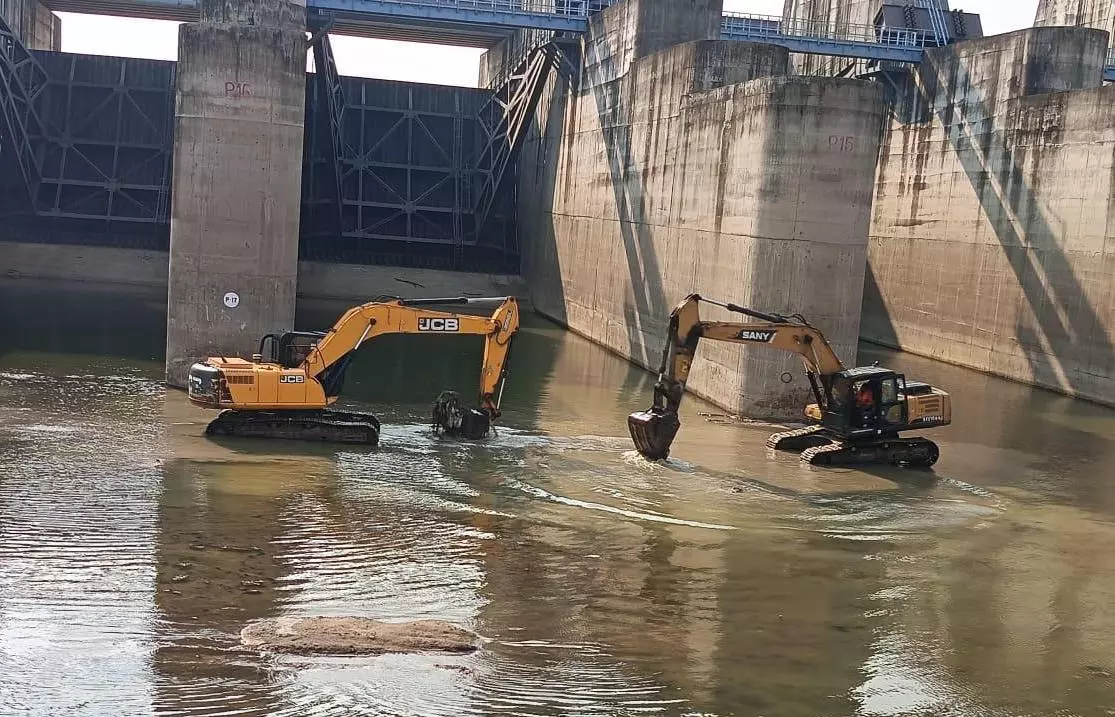More Design Problems Tumble Out of Medigadda Cupboard

HYDERABAD: The problems at the damaged Medigadda barrage are learnt to be more challenging that what was thought before. The government has said that it is determined to find solutions with the assistance from expert institutions,
On Monday, the state Cabinet discussed the way forward to carry out possible repairs to the barrage, once billed as the showpiece of the Kaleshwaram lift irrigation scheme (KLIS). The Cabinet, after going through the National Dam Safety Authority (NDSA)’s interim report on monsoon protection measures, decided that the barrage at Medigadda, along with the ones at Annaram and Sundilla, would be independently studied by two institutions with expertise in the matters and their findings and recommendations would be taken into account.
Some immediate protection works have started by L&T at the Medigadda barrage after the irrigation department instructed the company that was contracted to build the barrage.
Meanwhile, it is learnt that one of the findings in the geological studies done so far was the presence of a void of around 1,000 cubic metres under the foundation of the damaged Block 7 of the barrage. This gaping hole under the foundation is to be filled through grouting using a mixture of cement and sand.
It was the shifting of the material from under the foundation, coupled with the washing away of the flood dissipation blocks downstream that resulted in the sinking of a portion of Block 7, resulting in serious damage to some of its piers. The flood dissipation blocks could have prevented the piping out of sand and other material.
It is learnt that IIT Roorkee, which studied the situation earlier this year, found that the secant pile design provided by the irrigation department was not in tune with the material on the river bed and that the design was not adequate to prevent scouring of material from under the foundation.
“The river bed in that section is heterogenous, and not just sand. The design considered only sand, and this was one of the reasons why the scouring occurred,” sources said. The secant pile design too was the same on the upstream and downstream sides and this should not have been the case, it is learnt.
This contributed to the scouring too as the piles driven into the river bed to hold the foundation in place did not act like a box as they were supposed to. These should have been designed differently on the two sides of the barrage and these details are only now coming out, the sources said.

